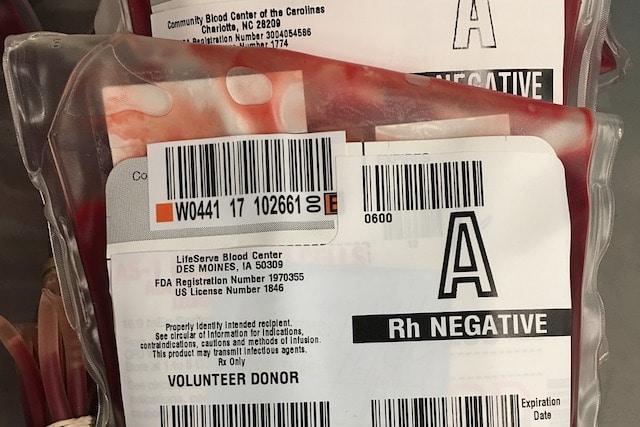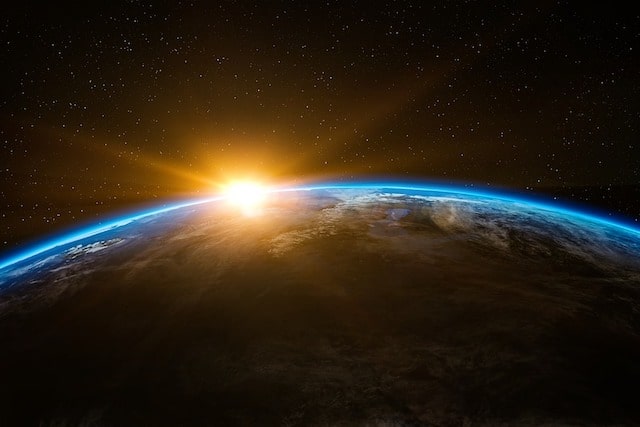10 Fascinating Facts Most People Surprisingly Don’t Know
It’s easy to assume that everyone knows what you know. Maybe you’ve memorized the periodic table, or you can whip up a flawless mole poblano without even checking a recipe. That’s great! But let’s face it—not everyone’s brain is wired the same, and what seems obvious to you might feel like an alien concept to someone else.
Take a moment and think: there was a time when you didn’t know how to tie your shoelaces, set up Wi-Fi, or understand what calculus even meant. Someone had to teach you, or you had to figure it out—step by step, probably with a few awkward stumbles along the way.
But here’s where things get interesting. On sites like Reddit’s r/NoStupidQuestions or even during casual chats, people sometimes ask things that seem basic. Questions like “What’s the difference between a debit and credit card?” or “How do microwaves work?” might make you raise an eyebrow—but those same questions open the door to some surprisingly fascinating explanations.
The truth is, even in this age of instant information, there’s still a lot that slips through the cracks. Whether it’s financial literacy, basic cooking skills, or how to change a flat tire, there are gaps in everyone’s knowledge. And that’s not weird—it’s just human.
Instead of scoffing at others for not knowing what we consider “simple,” maybe we should embrace these moments. After all, they offer a perfect excuse to explore something new and unexpected. And hey, that’s kind of what makes the internet (and this site) so fun, right?
You’re about to say “You didn’t know that?”, take a beat. Maybe what you’re really looking at is the start of someone else’s “Aha!” moment—one that might lead to a rabbit hole of mind-blowing facts or hidden skills they never knew they needed.
And who knows? You might even learn something unexpected yourself.
10. You Might Know Your Zodiac Sign—But Not Your Blood Type

Here’s a wild fact that might just surprise you: a huge number of Americans don’t know their own blood type. That’s right—something that could literally save your life in an emergency is a mystery to a shocking portion of the population.
There are four major blood types: A, B, AB, and O, and each of these can be either positive or negative, depending on something called the Rh factor. These types are defined by the presence (or absence) of specific antigens on your red blood cells. Sounds a bit technical, sure—but here’s why it matters: if you ever need a blood transfusion, and doctors give you the wrong type? Your immune system might go full attack mode and reject it. That can be life-threatening.
A 2020 poll revealed something surprisingly alarming: around 38% of Americans didn’t know their blood type. That’s over 125 million people walking around without this essential piece of medical knowledge. In fact, in another study, only 32% of Gen Z participants could identify their blood type. To compare, about 66% of Americans know their astrological sign—a fun detail, sure, but not exactly life-saving.
And the U.S. isn’t alone in this trend. Over half of Britons are also in the dark when it comes to their blood type. But in other parts of the world, the story flips. In Japan, for instance, nearly 90% of people know theirs—and it’s even used culturally in a way similar to how some people in the West view astrology. (Yes, they’ve even linked blood types to personality traits!)
Some blame the healthcare system. Others point to cultural values or simple lack of curiosity. But here’s the real kicker: knowing your blood type is super easy. It can be done through a quick blood test, a DNA kit, or you might even find it listed in your medical records or old blood donation paperwork.
If you’ve ever said “I’ll find out when I need to”, here’s a gentle nudge: emergencies don’t usually give warnings. And knowing your blood type could be the small detail that makes a huge difference.
9. Love, Trust… and Salary Secrets? Why Many Couples Don’t Know Each Other’s Income

Here’s something that might make you raise an eyebrow: over 40% of people have no idea how much money their partner earns. That’s right—even in relationships where everything else seems transparent, money often remains a mystery.
Think about it. We call marriage and long-term relationships a partnership, but when it comes to finances, the reality isn’t always so equal. For much of modern Western history, traditional gender roles shaped households—men worked, women stayed home, and the money followed a one-directional flow. But with economic shifts and the rise of women’s rights, that structure has been reshaped. Today, couples often share bills, homes, and even dreams—but not always their salaries.
A study from 2015 revealed a surprising stat: 43% of people didn’t know their spouse’s income. Fast-forward to 2021, and not much had changed—about 40% of cohabiting couples still had no clue. What’s even more bizarre? In surveys, people were asked to guess their partner’s earnings using multiple choice options in $25,000 ranges. Two out of five got it wrong by more than $25,000.
Let that sink in: you might know your partner’s favorite pizza topping, their Netflix watchlist, or even how they feel about pineapple on said pizza—but not their annual income.
What’s behind this curtain of silence? Money has long been a taboo topic, wrapped up in feelings of pride, shame, or comparison. Workplaces often discourage employees from discussing wages. Families rarely talk about money in detail. So when couples come together, there’s already a built-in culture of secrecy.
Yet here’s the contradiction: over 70% of couples surveyed said they communicate “very well” about finances. So are we being honest with ourselves—or just telling ourselves we are?
For a truly healthy relationship, experts suggest that open money conversations are as important as emotional connection. Not just budgeting or splitting bills, but talking about financial goals, debt, spending habits, and yes—actual income.
Because in the end, it’s hard to build a future together if you’re playing with missing pieces.
8. Over 1 in 4 Americans Can’t Cook — And It’s More Common Than You Think

Let’s be honest: cooking can mean a lot of things. If you can boil an egg or microwave a frozen dinner, that technically counts. But what about whipping up something like a crown rack of lamb with perfectly layered dauphinoise potatoes and a side of homemade mint sorbet? That’s a whole different league.
The surprising part? A significant chunk of the population doesn’t even make it past the egg-boiling stage.
Back in 2011, a study showed that 28% of Americans admitted they couldn’t cook at all. Fast forward to 2023, and things haven’t exactly improved. A more recent survey found that 56% of Americans struggle with basic recipes, the kind you’d expect to find on a beginner’s YouTube cooking channel. So whether you can’t or just struggle to, there’s a clear trend: a lot of us are not great in the kitchen.
And no, this wasn’t just about teenagers or college students living on instant noodles. The 2011 survey looked at adults aged 25 and over—people you’d expect to have at least a few go-to meals under their belts.
Meanwhile, across the pond, the situation wasn’t much brighter. A UK survey from 2014 found that 10% of Britons couldn’t cook anything at all, as in, literally nothing. Another 25% said they could only make three dishes—and we’re talking ultra-basic fare like eggs, toast, or porridge.
So what’s behind the decline in culinary skills? Some point to the rise of food delivery apps, pre-packaged convenience meals, and the overall pace of modern life. Others blame a lack of cooking education in schools or a generational shift where fewer people learn recipes from their parents or grandparents.
But the bigger issue might be this: many people don’t feel confident in the kitchen. Cooking isn’t just about ingredients—it’s about trial and error, creativity, and sometimes even making a complete mess. And in a world that loves posting perfect food pics on Instagram, that pressure can be overwhelming.
Yet learning to cook—even a few simple meals—can be a game-changer. It’s healthier, cheaper, and oddly satisfying. So if your go-to dish is instant ramen, don’t worry—you’re not alone. But maybe it’s time to try something new. Who knows? Your next kitchen experiment could be surprisingly delicious.
7. Aphantasia: The Condition That Prevents Millions from Seeing Images in Their Mind

Try this: close your eyes and imagine a dog. Maybe a fluffy golden retriever chasing a stick, or a tiny, yappy chihuahua in a pink sweater. Got the image? Good. Now, imagine living in a world where that image doesn’t exist—not because the dog isn’t real, but because your mind’s eye is completely blind.
This condition has a name: aphantasia. And surprisingly, about 3% of the global population lives with it. That might sound like a small percentage—until you remember that Earth is home to over 8 billion people. Do the math, and that’s roughly 240 million people who can’t visualize anything at all.
To put that in perspective: that’s more than 6 times the population of Canada, or enough people to form what would be the fifth-largest country in the world.
What exactly does aphantasia feel like? Imagine being told to picture your childhood bedroom, the face of your best friend, or even something as simple as an apple. For people with aphantasia, nothing shows up. There’s no mental slideshow. No flashes of light or shadow. Just pure, thought-based recognition without any visual component. They know what an apple is. They can describe it, draw it, even tell you the difference between a Fuji and a Granny Smith—but they can’t see it in their mind.
What’s even more astonishing is that many people with aphantasia don’t realize they’re different. For decades, it was assumed everyone imagined things the same way. The term “mind’s eye” was seen as just a metaphor. It wasn’t until 2003, when a man reported losing his ability to visualize after surgery, that scientists started seriously investigating. Once his story hit the media, thousands came forward, saying they had always thought mental imagery was just a figure of speech.
Today, thanks to increasing awareness and research—like those from Professor Adam Zeman at the University of Exeter—aphantasia is gaining recognition. But so many questions remain. Does it affect memory? Creativity? Emotional connection? Some artists and writers with aphantasia claim it’s had no impact at all, while others say it’s reshaped how they interact with the world.
6. Nearly Half of Americans Don’t Know Why July 4th Is Celebrated

Fireworks. Barbecues. Parades. Flags. Every year, on July 4th, Americans across the country come together to celebrate one of the most important national holidays. But here’s the jaw-dropping twist: a staggering 40% of Americans don’t actually know what they’re celebrating.
That’s right. In a 2023 survey of 1,000 U.S. citizens—people either born in the United States or naturalized—two out of five respondents couldn’t correctly say why July 4th is a holiday. While the air fills with red, white, and blue and “Land of the Free” plays on repeat, millions are unclear about the actual meaning behind the day.
You might be thinking, “It’s Independence Day, of course!” And you’d be right—but that clarity is surprisingly rare. In a similar survey from 2011, only 58% knew the U.S. was celebrating independence. Even more shocking? Only 76% could identify that America declared independence from Great Britain.
How does such a basic piece of national history slip through the cracks?
Part of it may lie in how tradition turns into routine. Over time, holidays like July 4th become less about their origins and more about the celebration itself—grilling burgers, watching fireworks, and maybe enjoying a long weekend off work. The deeper historical meaning often fades into the background.
But the truth is worth remembering: July 4, 1776, marks the day the Continental Congress adopted the Declaration of Independence, signaling the American colonies’ break from British rule. It was the birth of a new nation and the start of a revolutionary experiment in democracy.
And yet, nearly half of Americans are celebrating without knowing it.
This surprising stat highlights an important cultural truth: we often inherit traditions without understanding them. But history is more than just facts—it’s the story of how we got here.
5. The Astonishing Truth: 70% of People Can’t Identify the Seafood They Eat

Seafood has become an incredibly popular choice for diners everywhere. Just take a look at the endless shrimp specials at Red Lobster, and it’s clear that seafood is a beloved cuisine. Everyone loves the taste and variety that seafood offers. But here’s a surprising fact: loving seafood and actually knowing what you’re eating are two entirely different matters.
Surveys have revealed that a staggering 70% of people struggle to identify the seafood on their plates. Now, before you dismiss this as an exaggeration, imagine this scenario: someone places six different, whole fish in front of you, with no labels or hints, and asks you to identify each one. How confident are you that you’d be able to do it?
In Europe, this very challenge was given to people, and the results were eye-opening. On average, participants managed to correctly identify just two out of six common fish species. British and Belgian respondents didn’t fare quite as well as others. In fact, the British scored the lowest among the groups tested, while the Spanish participants impressed everyone by scoring the highest.
Why is this happening? Well, part of the issue lies in the way seafood is Often, people buy fish that has been filleted, leaving them without any visual clues about its origin. Moreover, seafood mislabeling is a widespread problem. It’s not uncommon to find fish being sold under a different name or even being substituted with a completely different species.
This lack of knowledge about the seafood we consume raises some interesting questions. How can we ensure we’re making informed choices about what we eat? And what steps can be taken to improve the transparency and labeling of seafood in our markets and restaurants?
4. Over Half of Americans Can’t Name All Four Grandparents — Can You?

Think you know your family well? You might be surprised.
Despite how often we talk about the importance of family roots and heritage, a 2022 survey revealed that 53% of Americans can’t name all four of their grandparents. That’s right—more than half of the population has lost track of something as simple as a name from their family tree.
You don’t need to be a genealogist to appreciate the strange irony here. Everyone has four biological grandparents, yet millions of people draw a blank when asked to name them. It’s not always about forgetfulness—sometimes it’s distance, lost connections, or simply never having met them. But still, it’s a telling stat about how our connection to the past is slipping.
And it’s not just names we’ve lost.
According to another survey from 2019, 1 in 7 people had no idea what any of their grandparents did for a living, and 21% didn’t even know where a single grandparent was born. These are the people who helped shape our lives, directly or indirectly, and for many, they’re becoming a mystery.
Is this a sign of changing times? Possibly. In today’s fast-paced, digital world, family histories are easily forgotten unless we make an effort to preserve them. Many families no longer live close together, and fewer shared meals or stories mean that knowledge fades quickly.
But here’s a silver lining: modern tools like ancestry websites, DNA kits, and digital family trees are making it easier than ever to reconnect with your heritage. All it takes is curiosity—and maybe a phone call to an older relative.
3. Astonishing Lack of Basic Science Knowledge: 25% of Americans Unaware the Earth Orbits the Sun

The universe is a vast expanse filled with countless wonders and mysteries waiting to be explored. Astronomy, while not a subject uniformly and extensively taught in schools across the nation, does have its fundamental concepts typically introduced in basic science education. These basics encompass things such as the number of planets in our solar system and the fact that our planet orbits the sun. However, it seems that some people may have simply tuned out on that particular lesson.
Back in 2012, the National Science Foundation carried comprehensive poll. This poll, which quizzed 2,200 people on a set of 10 questions, brought to light some rather concerning results. When asked whether it is the Earth that orbits the sun or vice versa, an alarming 25% of the respondents answered incorrectly. It’s quite mind – boggling that in this day and age, a significant portion of the population doesn’t seem to grasp this fundamental concept.
To add to this, only 39% of the people surveyed could correctly state that the universe began with an event known as the Big Bang. The idea that the entire universe had a beginning through an explosive expansion is a cornerstone of modern cosmology, yet a substantial number of people remain unaware.
Another area where a lack of understanding was evident was in the concept of human evolution. Just 48% of the respondents were in agreement with the well – established scientific theory that humans evolved from more primitive species over millions of years.
When looking at the overall results, the average accuracy rate among the respondents was 65%. While this may seem like a passing grade in a typical school setting, when it comes to understanding the basic tenets of science, a 65% success rate might indicate that there is still much work to be done in terms of science education and public awareness.
It’s not just about having a bunch of facts stored away; having a sound understanding of fundamental scientific concepts is crucial for making informed decisions, whether it’s in daily life or in matters that affect society at large. For example, understanding evolution helps us make sense of the diversity of life on Earth, and being aware of the Big Bang theory gives us a broader perspective on the origins of the universe.
2. 300 Million People Around the World Don’t Have a Single Friend — Here’s Why That Matters

We live in a world more connected than ever — messages fly across the globe in seconds, and you can video chat with someone on the other side of the planet. But despite all the digital ties, a staggering number of people feel completely alone.
According to global surveys, around 300 million people — nearly the entire population of the United States — don’t have a single friend. Not one person they can call or confide in. That’s nearly 4% of the world’s population, navigating life without anyone they consider a true friend.
Even more striking, over 20% of people worldwide say they don’t have close friends or family they can rely on. Whether that’s due to isolation, anxiety, social changes, or life circumstances, it’s a powerful — and heartbreaking — reminder that loneliness is very real.
This phenomenon affects some generations more than others. A recent study found:
- 27% of millennials say they have no close friends
- 22% have no friends at all
- 16% of Gen X report the same
- Only 9% of Boomers fall into this category
The numbers suggest that loneliness is growing among younger generations, despite the illusion of social connectivity through apps and social media. Many interactions are surface-level, and deep, meaningful relationships are harder to come by.
Experts say modern life plays a big role — people move more often, work remotely, and spend more time online than ever before. All of that makes forming real-life connections more difficult. Add mental health challenges into the mix, and the result is millions of people quietly experiencing a friendship famine.
1. 3 Billion People Have Never Used the Internet — Here’s Why That’s Still a Reality

The internet has revolutionized how we live. For many of us, it’s more than just a tool — it’s a lifeline to work, education, entertainment, and connection. But what if you lived in a world without it? For approximately 3 billion people, that’s their reality.
Despite the tech-driven lives most of us lead, over a third of the global population has never accessed the internet. That’s about 3 billion people living in regions where access to even basic infrastructure, like electricity, is limited. In many developing countries, it’s not just a matter of not having a smartphone or Wi-Fi — some people live in areas where basic communication tools are scarce, making internet access a far-off luxury.
Interestingly, even in wealthy nations like the United States, the internet isn’t ubiquitous. Around 7% of Americans, or about 23 million people, do not use the internet. The digital divide remains significant, with older generations being hit hardest. In fact, 25% of those who don’t use the internet are over the age of 65, highlighting the role that age and technology access continue to play in shaping our connected world.
While access to the internet has expanded dramatically in the last few decades, it’s clear there’s still a lot of work to be done. Imagine the potential of 3 billion minds that have never experienced the vast world of information, communication, and innovation that we take for granted every day.
























